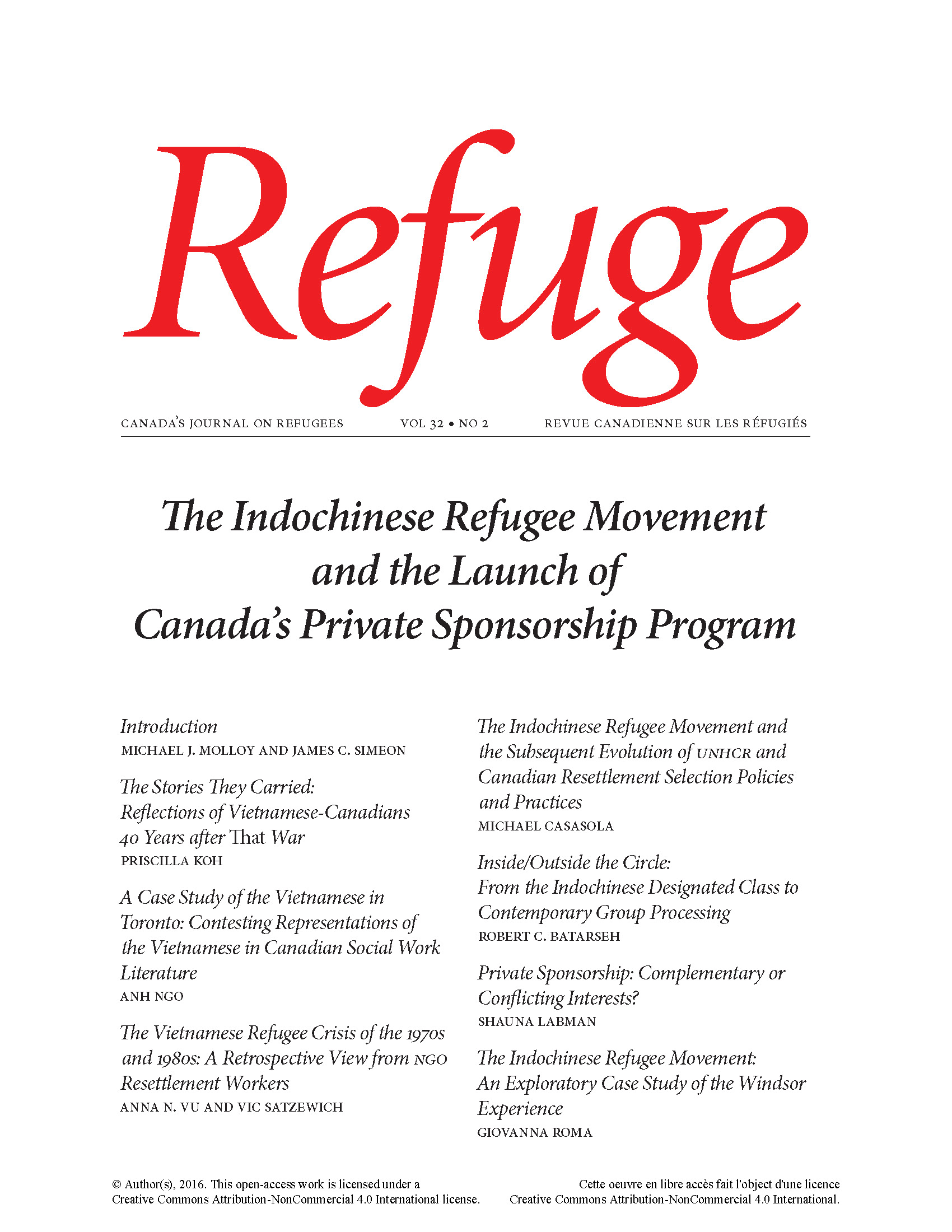The Indochinese Refugee Movement and the Subsequent Evolution of UNHCR and Canadian Resettlement Selection Policies and Practices
DOI:
https://doi.org/10.25071/1920-7336.40270Keywords:
UNHCR, Indochinese refugees, Canadian refugee policy, resettlement, selection policies, private sponsorship, group referralsAbstract
The Indochinese refugee movement cast a long shadow over subsequent resettlement operations. UNHCR has since asserted greater leadership, with resettlement becoming more individually focused and globally diverse, but also more complex. Canadian policy has also evolved to become increasingly focused on protection and supportive of UNHCR’s durable solution activities. This article seeks to compare UNHCR and Canadian resettlement selection policy and practice in place during the time of the Indochinese movement up to mid-2015. It highlights key elements in the evolution of UNHCR and Canadian resettlement policy and the factors behind them. It also identifies aspects of the Indochinese movement that are relevant to contemporary refugee policy.
Metrics
Downloads
Published
How to Cite
Issue
Section
License
Copyright (c) 2016 Michael Casasola

This work is licensed under a Creative Commons Attribution-NonCommercial 4.0 International License.
Refuge authors retain the copyright over their work, and license it to the general public under the Creative Commons Attribution-Non Commercial License International (CC BY-NC 4.0). This license allows for non-commercial use, reproduction and adaption of the material in any medium or format, with proper attribution. For general information on Creative Commons licences, visit the Creative Commons site. For the CC BY-NC 4.0 license, review the human readable summary.







